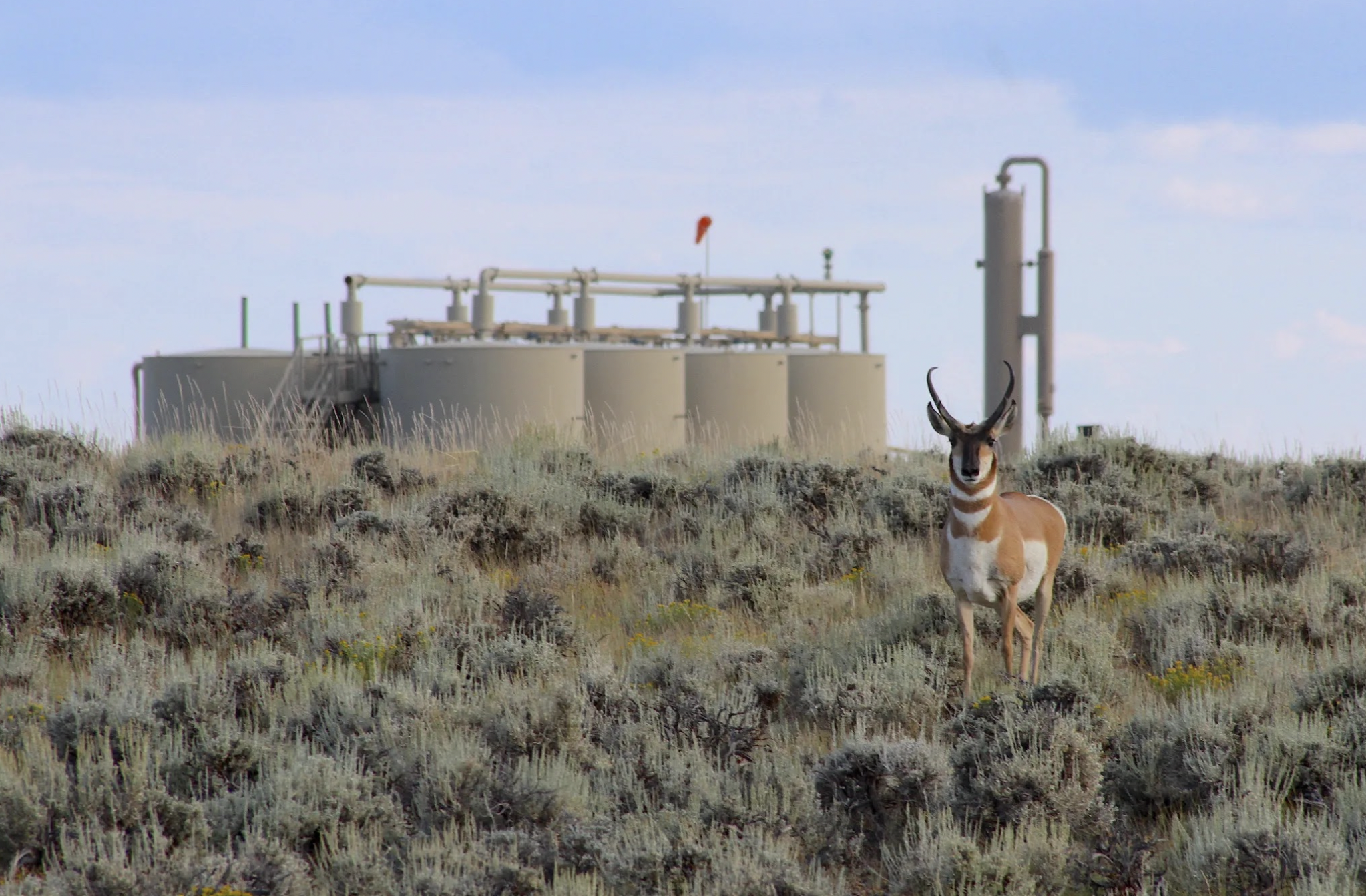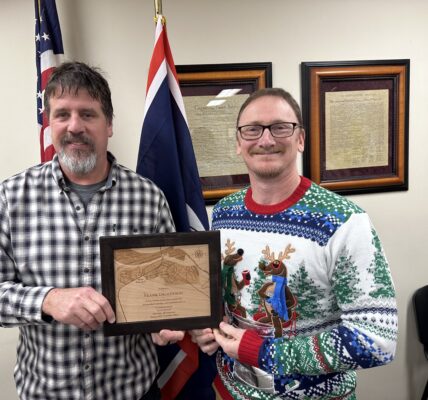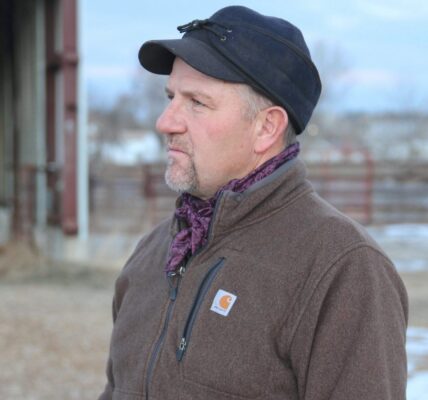
By Billy Arnold
Jackson Hole News&Guide
Via- Wyoming News Exchange
JACKSON — Wyoming officials have approved another oil and gas lease in an area that state officials, biologists and wildlife advocates hope will one day preserve the iconic “Path of the Pronghorn.”
The lease was approved without protections for migrating antelope.
Pronghorn use the migration corridor to trek between winter range in Sublette County and summer range in Grand Teton National Park.
The process of designating that corridor — giving it state protections — has been delayed because of lobbying by industry groups. In the fall of 2023, the Wyoming Game and Fish Department and state land managers tried to protect a square mile of state land called Parcel 194, which was in a migratory pinch point, with stipulations intended to protect pronghorn movement. Wyoming’s top five elected officials rebuffed that request and approved the oil and gas lease sale without specific protections.
But in March, when another square mile of land known as Parcel 117 was up for lease in the same migration corridor, just farther south, Game and Fish did not lobby for those specifications.
That’s because Parcel 117 isn’t as ecologically sensitive as 194, said Angi Bruce, deputy director of the Game and Fish department.
“It was not in the same league,” Bruce told the Jackson Hole Daily.
Bruce’s reasoning is that pronghorn most typically use land on the northeast portion of Parcel 117, land that department biologists have deemed “high use” and “stopover” areas, and there’s room for development in the southwest part of the parcel.
“Evaluating it in the whole framework of the movement in that corridor, the threat that we thought it imposed was minimal,” Bruce said.
Wildlife advocates, who disputed Bruce’s assessment of Parcel 117’s ecological value, were upset to see yet another lease approved in a migration corridor that biologists have documented for decades but that remains unprotected because of industry opposition.
In 2019, industry objections prompted Gov. Mark Gordon to rework a policy for designating migration corridors and slowed the state’s process of protecting the Sublette Antelope Migration Corridor, the state’s formal name for the Path of the Pronghorn. In March, the Wyoming Game and Fish Commission directed agency staff to formally “identify” the corridor and study whether a formal “designation” is necessary. That process could take at least a year.
In the meantime, oil and gas leases are being sold.
“It was a great initial step that the Game and Fish Commission took at the meeting,” said Nick Dobric, Wyoming conservation manager for the Wilderness Society. “But the reality is the timeline we have laid out in the executive order is very slow. Until we have the governor designate the corridor, these sort of leases are going to be able to move forward without any protections.”
The State Board of Land Commissioners, which consists of Gov. Gordon and four other elected officials, approved Kirkwood Oil and Gas LLC’s lease on Parcel 117 in April without discussion.
The lease was included in the board’s consent agenda and approved along with roughly 120 other leases. Some conservation groups were waiting to provide public comment but didn’t get a chance.
After the vote, Secretary of State Chuck Gray criticized the Board of Land Commissioners’ use of consent agenda.
“We need to move away from these consent lists,” Gray said. “I think that’s part of the reason we’re up here right now. I think there’s a lot of problems with them. And I think we just need to go thing by thing and get narrative at the meetings on these.”
Parcel 117 is located just east of Highway 191 between Pinedale and Farson. It consists of a combination of what Game and Fish biologists consider high use and stopover areas. As Bruce said, the southwest part of the parcel is not critical habitat and would not be protected, even if the corridor was designated.
But wildlife advocates still say Parcel 117 has ecological value.
While Parcel 117 is not considered a bottleneck, like Parcel 194, which has yet to receive that official designation from the state, the two parcels are similar in other ways. Both contain high-use and stopover habitat, with Parcel 194 containing more of the latter and Parcel 117 containing more of the former. And both have water, which could make development more difficult in those areas.
Dobric said the reservoir in the southwest corner of Parcel 117, where there is not critical habitat, could prevent development in that area and push developers toward more sensitive wildlife habitat.
Without specific protections, there’s little to prevent the developer, Kirkwood Oil and Gas LLC, from using sensitive areas. Avoiding that area would depend on Kirkwood’s “good nature,” Dobric said. “And sometimes that’s not in the best financial interest for them.”
If a lease is approved in a migration corridor, the Office of State Lands and Investments typically attaches a stipulation governing how the company leasing the land can develop. A stipulation requires companies to produce a “plan to protect and/or mitigate impacts to the migration corridor including strategies to avoid bottleneck and stopover areas.” The plans must be approved by the director of the Office of State Lands and Investments before exploration and development can happen.
“All attempts should be made to avoid and minimize impacts to the surface in order to maintain habitat functionality within the ungulate migration corridor,” the state’s standard stipulations read.
While those protections were not applied to the parcel in question, Bruce said Game and Fish will still consult with Kirkwood because of other protections for wildlife in the area, like sage grouse. That will also give the state game agency a chance to talk about pronghorn.
Bruce cautioned that corridor designation is not intended to prevent development altogether but rather place sideboards around it.
Development has not begun on either Parcel 117, or Parcel 194, the parcel leased in the bottleneck in late 2023. Lease sales are just the first part of the process for oil and gas leasing on state land. Next, Kirkwood, which leased both parcels, will need to approach the Wyoming Oil and Gas Conservation Commission for a permit to develop. Bruce said that to her knowledge, no parcel leased within a migration corridor has yet moved toward development.
“In a way, the executive order hasn’t really been tested,” she said, referring to the governor’s order outlining the process of designating migration corridors and affording them protections.
Renee Seidler, executive director of the Jackson Hole Wildlife Foundation and a wildlife biologist who studied how oil and gas development impacted pronghorn, acknowledged the protections for migration corridors as a “compromise.” But she lamented that leasing is proceeding while the process continues to drag on.
“If we continue to pinch and develop, eventually we will lose migrations,” Seidler said. “It’s a little astounding that we still don’t get it and we still don’t protect these really important corridors.”





